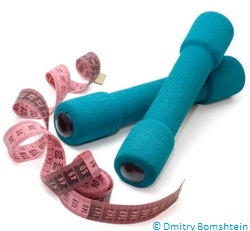Exercising with Mobility Issues
It is a fact that people who do not exercise and spend their time sitting down all day are more likely than active people to suffer from some diseases and conditions that come with getting older. This can also be said for recovery from injury.
But what if you can't move as well as you want to?
How can you get active if you have limited mobility?
There are many challenges faced by people with mobility issues - but it is not impossible to do some form of exercise - however small.
You will need to adapt and modify your approach to exercise but there are exercises that are suitable for people with limited mobility.
It is always advisable to start with a chat to your doctor about what exercises are realistically within your ability and what goals you can work towards. Your doctor may also be able to recommend some services in your area that help people with limited mobility to live more active lives.
If you are able to access the local area then swimming is ideal for working out and having fun.
Most public swimming pools now run classes specifically aimed at those with mobility issues, as well as making access and participation a lot more accessible. 
The support and buoyancy you receive when swimming will help to take the extra weight off your body. and you may find that working out in the water can be very exhilarating. It is like being weightless. Pool workouts build and tone all muscle groups, especially your core.
If you need to use a cane or are confined to a wheelchair then upper body strength is important to move yourself around.
Even if you are confined to your home and unable to venture out, you should still be able to participate in some form of exercise whilst sitting down.
You can use light weights and higher repetitions to help build up the muscles in your arms and back. These exercises can be done seated and will also help to give your metabolism a little boost.
Start gradually with a few repetitions, at intervals, throughout the day and build up to more as your muscles improve.
Using a resistance band could also be helpful and they come in different sizes and strengths. You can loop them around a doorknob or a chair and perform upper arm and body exercises. Resistance bands are also a great alternative for anyone that doesn't have the strength in their hands to grip onto dumbbells.
If you know someone else with mobility issue you could try getting together to encourage and work together. This is a good way to keep you both motivated.
There are also exercises that are actually meant to do with another person - using the other person as a resistance, sort of pushing, pulling, and stretching through the exercises.
For more information contact your local surgery or visit NHS Choices.